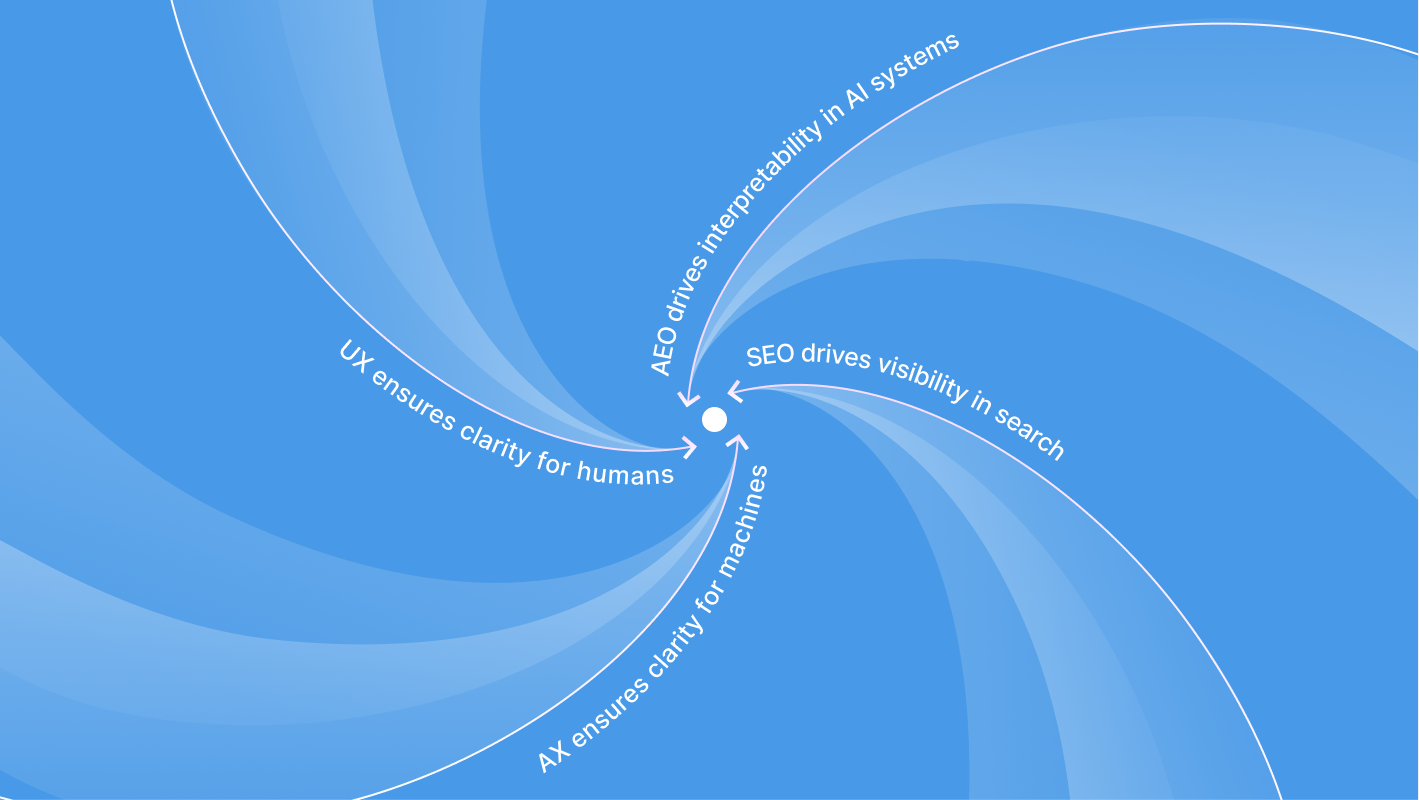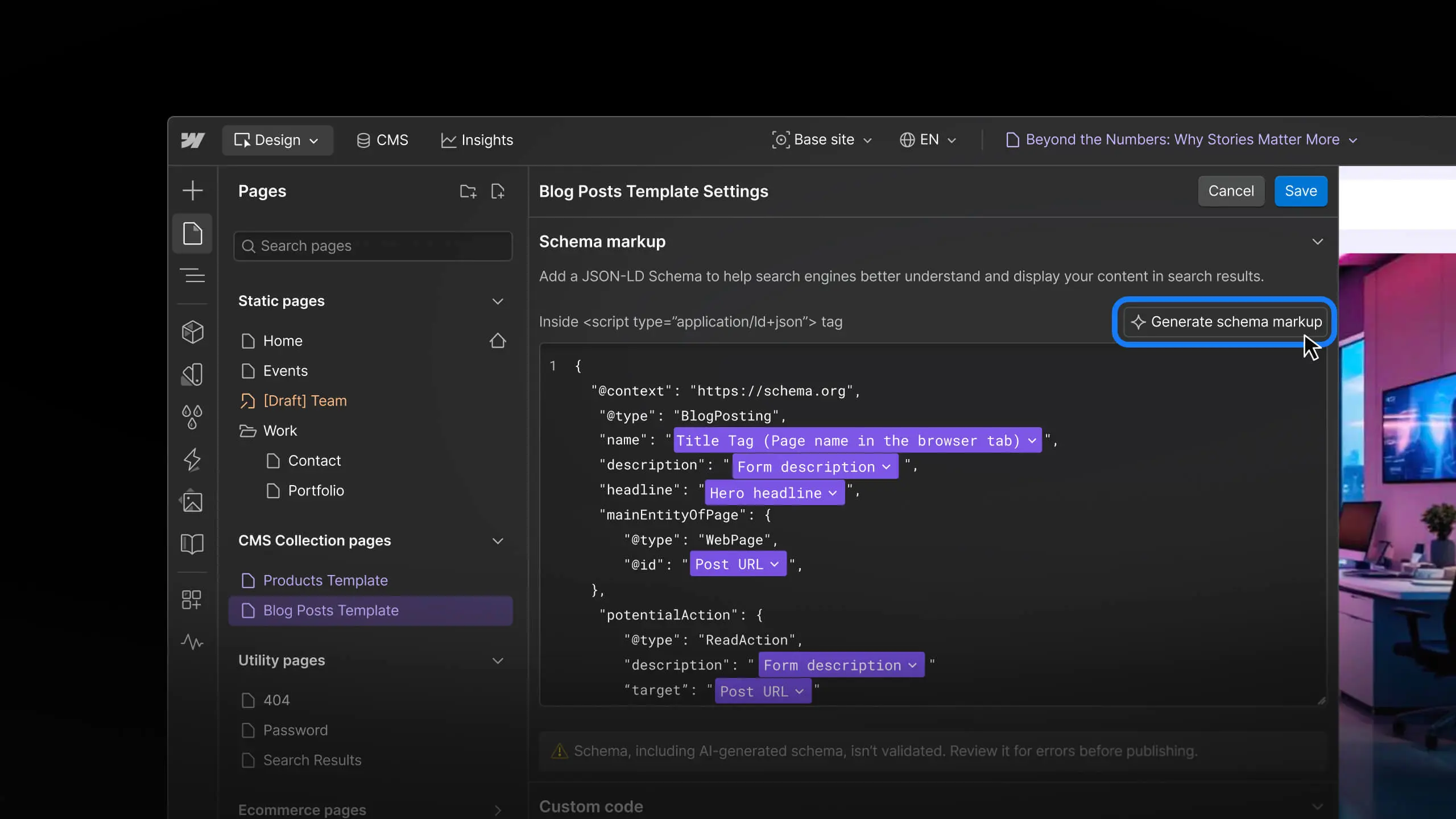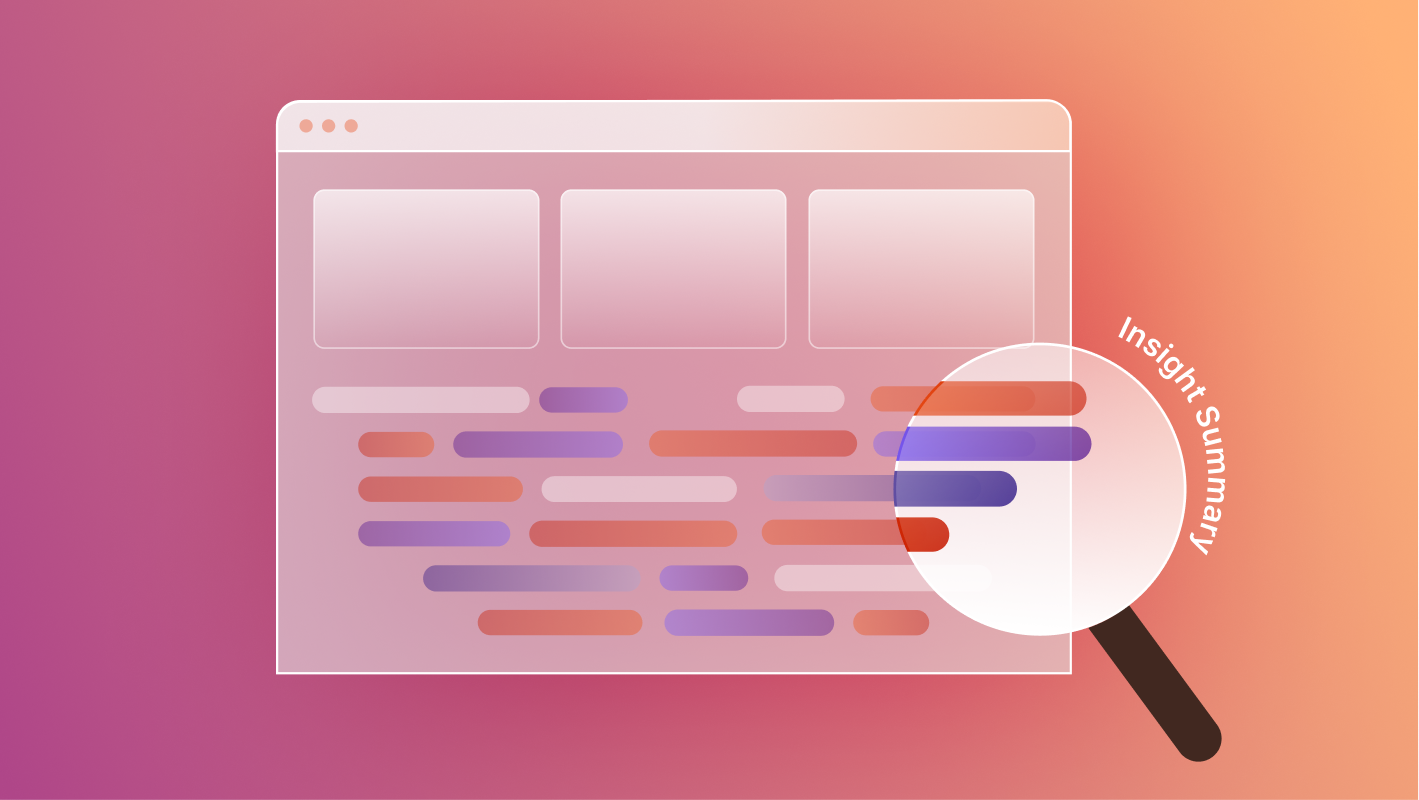Credibility used to be something you designed almost entirely for people. A clean layout, a clear story, good typography, a few trust badges. If your site felt organized and confident, that was enough to reassure a visitor that your brand was competent. Today, credibility has two audiences. Humans still respond to clarity and narrative while AI systems respond to structure, relationships, and semantic meaning.
As AI assistants like ChatGPT, Perplexity, and Gemini take a larger role in how information gets discovered, the criteria for what makes a site “credible” is shifting. Visibility is no longer just about ranking well in traditional search results. It is about whether both humans and AI agents can interpret your content, trust your expertise, and understand how your ideas connect.
This is where four disciplines meet: SEO, AEO, UX, and AX. Each one looks at credibility through a different lens. Together they shape whether a site is discoverable, understandable, and trustworthy in an AI driven world.
How SEO and AEO Became Distinct Layers of Visibility
Traditional SEO is still essential. It helps search engines identify relevance, rank content, and understand the intent behind a page. Search still matters. People still use Google. But search is no longer the only force deciding whether your brand gets surfaced. AI systems now play an equal role.
AI assistants interpret content differently. They do not choose from a ranked list of links. They produce a single synthesized answer. Instead of asking which URL should be number one, they ask whether your domain is structured clearly enough to be cited. That distinction is what separates SEO from AEO.
SEO increases your chances of appearing in search. AEO increases your chances of being included in an AI-generated answer.
The signals also differ. SEO still considers backlinks, keywords, and page level optimization. AEO looks for patterns that help models build confidence in your domain. AI agents read semantic HTML, metadata clarity, page relationships, internal linking depth, author transparency, and how consistently you cover a topic across multiple pages. They weigh freshness heavily and they pay attention to whether your content forms cohesive clusters rather than isolated posts.
Research over the last year shows that the domains cited most often by AI systems tend to share a few attributes. They have predictable content structures, clear relationships between pages, depth around real expertise rather than generic summaries, and they update frequently enough that the entire domain feels alive. These are not traditional ranking signals. They are comprehension signals.
This shift connects back to something we explored in an earlier piece about whether SEO is “dead,” as some marketing publications have boldly stated. It isn’t as long as people are still searching. But the kind of SEO that works today depends far more on structure, clarity, and design than it used to. If search engines and AI assistants are interpreting your content through meaning rather than keywords, then the way you design and organize your site becomes part of how you rank.
Read the full article: Is SEO Dead? Why Design Still Decides What Ranks in the Age of AI.

UX as the Human Layer of Trust
Even as AI becomes a primary discovery channel, human perception still decides the quality of an experience. People look for harmony in spacing, hierarchy, and typography. They look for navigation that feels intuitive rather than busy. They want pages that flow and copy that feels knowledgeable and grounded. If something is confusing, credibility evaporates instantly.
UX is the human filter that turns information into trust.
What is shifting is the way UX interacts with structure. AI systems cannot see a layout or feel a visual rhythm, but they can understand whether your headings make sense, whether your content is grouped intentionally, and whether your page components form a consistent pattern. A well organized website helps people navigate content. It also helps AI agents map your meaning.
When UX and structure support each other, both audiences understand the story you are trying to tell.
AX as the Machine Layer of Trust
AX is becoming its own discipline because it focuses on how AI systems experience your content. It is not visual, nor emotional. It is entirely structural.
AI agents read: how your topics relate, how your pages link, how your metadata is written, how deep your information goes, how consistent your components are, and how fresh your content appears.
They look for patterns. If your site has several articles covering an area with depth and clarity, AI systems infer expertise. If your internal linking forms a meaningful cluster, they can place you within a knowledge graph. If your site updates often, models infer that the information remains relevant.
AX does not replace UX. It amplifies it. A site that is visually polished but structurally scattered feels trustworthy to humans but invisible to machines. A site that is structurally precise but visually confusing may be machine readable but frustrating for visitors. Together, they create a foundation of trust for both audiences.
Where the Four Layers Converge
The interesting part is how these four disciplines work together. SEO drives visibility in search. AEO drives interpretability in AI systems. UX ensures clarity for humans. AX ensures clarity for machines. Each one solves a different part of the credibility equation, but none can stand alone anymore.
SEO and AEO overlap in intent, but they diverge in how they evaluate trust. UX and AX share the same goal, but they measure two different kinds of clarity.
When they work together, they form a system that helps humans understand your story and helps AI systems understand your expertise. This is becoming the new standard for how brands communicate online.
And this is especially important for any web agency or design-led studio. Most redesigns historically focused on UX and visuals. Today, a credible site needs depth, structure, semantic meaning, and domain level coherence that supports both SEO and AEO at the same time.

Credibility Is Becoming an Ecosystem
The most significant shift is that credibility is no longer something that happens at page level. It happens at the domain level. The best strategy for long-term AI visibility is to treat your entire site as a network of meaning rather than a collection of stand-alone pages. They pay attention to how your case studies reinforce your service pages, how your team bios support your authority, how your insights form topical clusters, and how your navigation mirrors your information architecture.
You are no longer designing pages. You are designing patterns that communicate who you are to two very different audiences. Humans want clarity, narrative, and visual flow. Machines want structure, semantics, and consistency. A credible brand supports both.
Why Webflow Supports This Multi Layered Approach
Webflow’s structure gives design teams control over the patterns that matter for both humans and machines. Clean HTML benefits traditional search. A component based system creates predictable structures that AI agents can interpret with confidence. Semantic headings help clarify meaning, and a CMS built on repeatable templates makes it easier to build topical depth, internal linking patterns, and domain level expertise that support AEO and AX.
The platform’s newer AI tools also reinforce this clarity. Features like AI-generated SEO fields, automated schema suggestions, and intelligent content restructuring help teams maintain consistency across large sites. When used intentionally, these tools reduce the guesswork around technical SEO and make it easier to keep a site semantically clean and machine readable. We explored this shift more deeply in our article Smarter SEO with Webflow’s AI Tools, which dives into how these features strengthen both search visibility and agent-level interpretability.
Design clarity and structural clarity reinforce each other. Webflow supports both, which is why it works so well for credibility driven design and aligns naturally with Composite’s approach to UX and development.

Where Credibility Goes Next
Credibility online is becoming less about how a website looks and more about how consistently it communicates meaning. The brands that succeed over the next few years will be the ones that build systems rather than pages. They will invest in depth rather than summaries, structure rather than decoration, and domain level expertise rather than isolated updates.
SEO, AEO, UX, and AX may each have their own priorities, but they are converging into a new standard for how brands show up online. The more clearly your site speaks to both humans and machines, the more visible and trustworthy your brand becomes.
The future of credibility belongs to the teams that treat clarity as both a design practice and a structural one.




.svg)

.svg)











